The Holistic Approach to Aging and Health with Senior Living
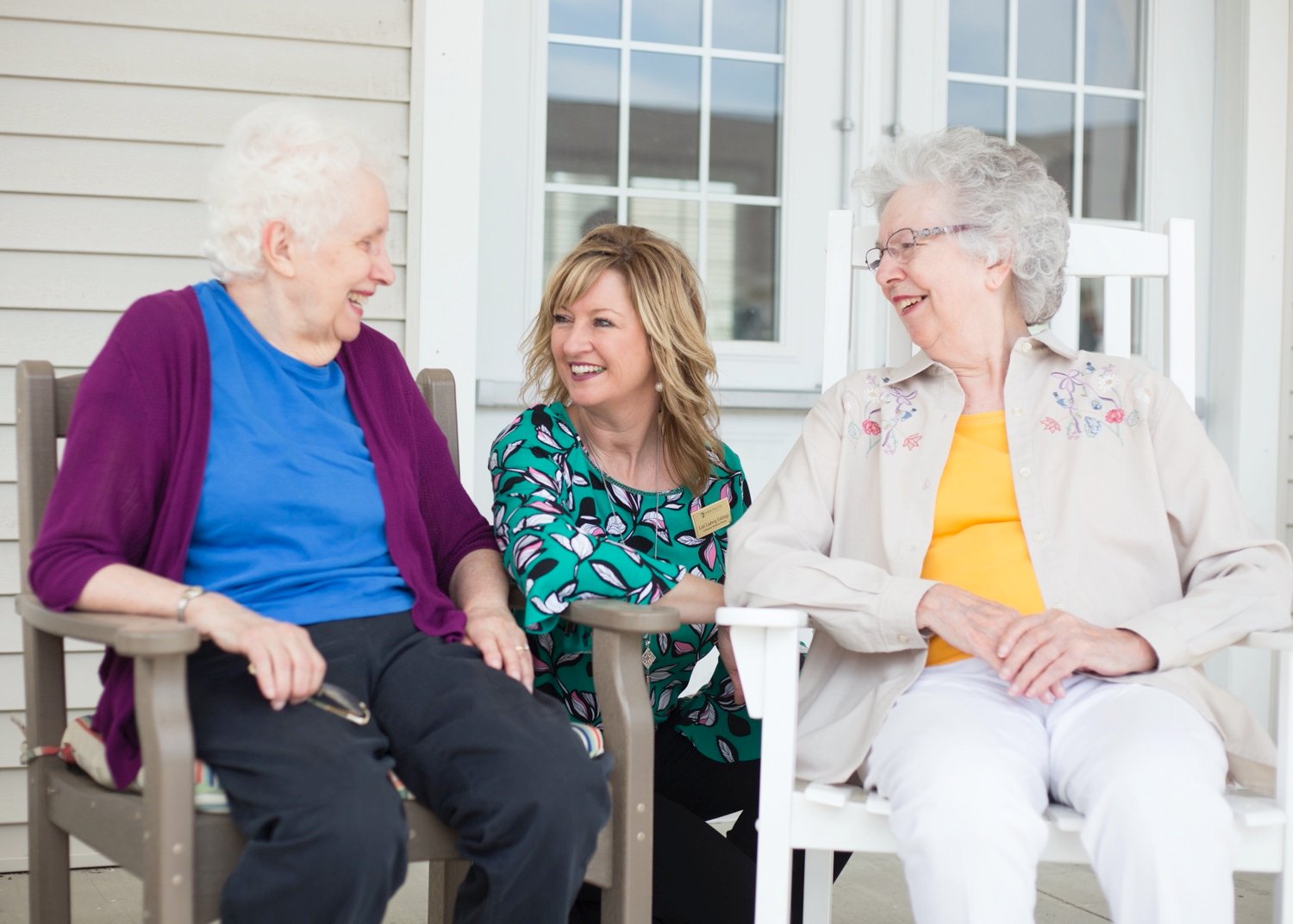
Download this guide, share with family, or keep scrolling to read.
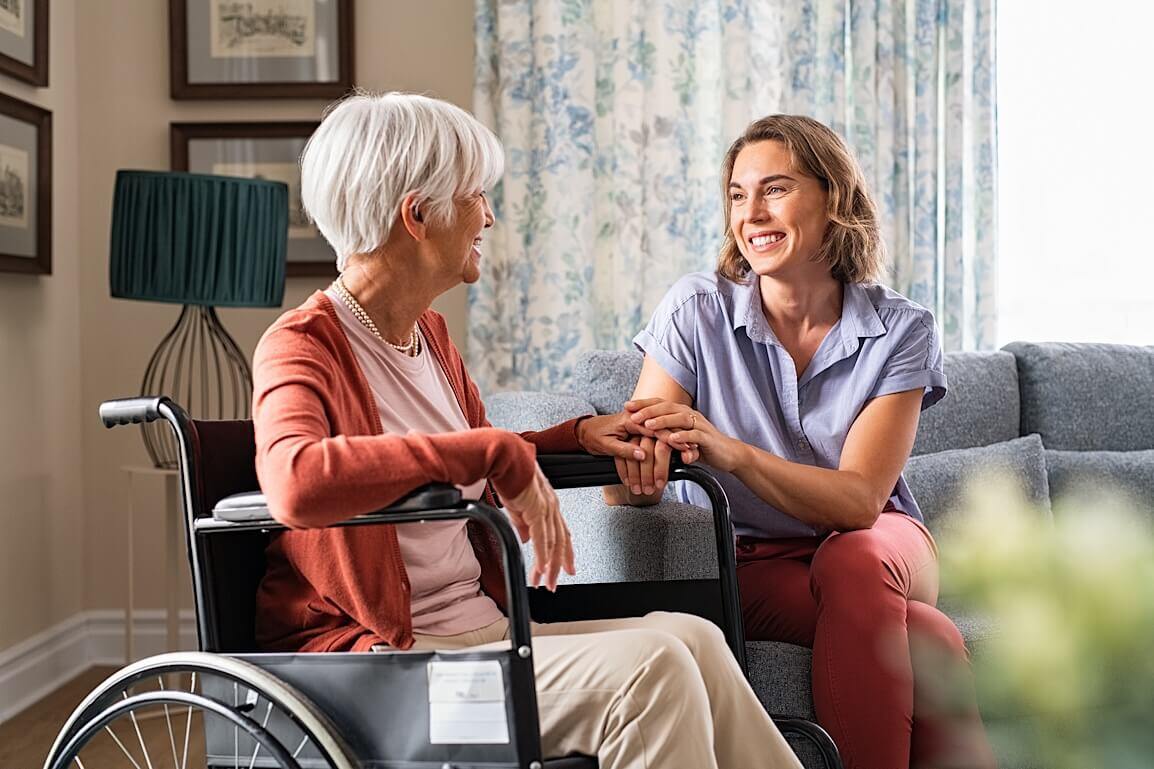
The Holistic Approach to Aging and Health with Senior Living
Download a PDF version of this guide by filling out this form.
Share this resource
Copy the link to share with friends and family via text, or use the button to send it by email.

1. Starting Your Journey
Are you wondering whether your parent or family member is safe, healthy, and happy while they’re living alone and you’re not around? It’s a common concern for adult children, but it can be difficult to know when and how to ask questions or pry into their living situation.
If your family member is struggling as they live alone, the prospect of actively addressing the problem may seem overwhelming. Many factors can weigh on your mind: wondering if it’s the right time for senior living, considering which senior living community is right for your parent or family member, and worrying whether your parent or family member will be happy there.
In addition to all of those factors, you may hold negative senior living community stereotypes—snippets from movies and TV shows or memories of visiting your own great-grandmother in a nursing home decades ago. Want to know some good news? That cold, sterile, and hospital-like environment common in the popular imagination isn't accurate when it comes to the actual experience of living in today’s modern senior living communities.
We’re here to break down stereotypes and dig into the essential information you need to know about today’s senior living communities, ways they support your family member’s happiness, and strategies for choosing the best senior living community for your parent or family member.

2. Common Stereotypes About Senior Living
Our culture perpetuates many misconceptions about senior living communities. Therefore, it should come as no surprise that more than 60 percent of people want to stay in their current living space as they age.
Common stereotypes about senior living communities include the idea that senior living is only for old or sick people or that these communities are only for people who “have to” be there. Possibly one of the worst misconceptions is that families are abandoning their family members when they move into a senior living community. These stereotypes can be harmful, preventing seniors from experiencing all that a senior living community has to offer and living their best lives.
The reality is that senior living isn’t for “old” people, nor are seniors being abandoned when they move into these communities. Senior care facilities in the 1950s were clinical, sterile environments that didn’t focus on the resident as a human, but senior living communities today are drastically different. They focus on improving the quality of life for those 55 years of age and older, providing a welcoming, comfortable environment that feels like home and focuses on the mental, social, and spiritual dimensions of wellness.
Senior living communities support residents’ health goals so they can live healthier, longer lives. Amenities and conveniences at these communities also relieve stress and improve the residents’ day-to-day life. When adult children know that their family member is thriving in the right senior living community, it alleviates the strain they feel as they support their aging parents.
Explore Related Resources
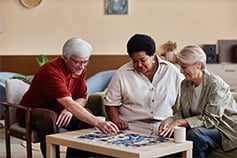
Debunking 9 Senior Living Misconceptions
Don’t let these nine senior living misconceptions stop you from experiencing the benefits available at a senior living community.
Discover the Truth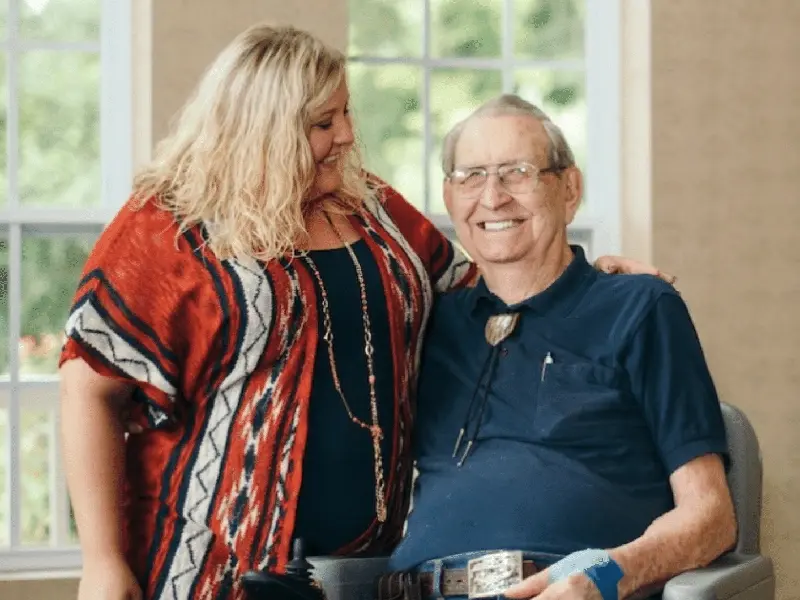
3. Types of Senior Living
Each senior living community offers one or more types of options, depending on the unique care needs of the residents. These options feature specific services and perks that provide the exact level of support residents require.
Independent Living
The independent living option is great for seniors who no longer want to deal with the difficulties of homeownership and prefer a low-maintenance life. An independent living community provides housekeeping services, grounds maintenance, and other services that your family member would normally have to take care of when living alone in a house.
Independent living is best for seniors who:
- Don’t require active levels of assistance.
- Still manage their daily activities.
- Want fewer chores and a convenient, fun social schedule.
- Enjoy learning new things and making new friends.
Assisted Living
An assisted living option balances support and independence. In these communities, seniors get hands-on support for daily activities while doing new things, making new friends, and participating in new opportunities.
Assisted living care levels vary for each resident depending on what they need. These care levels may include medication management, personalized care, or assistive care. Caregivers in these communities can help with showering, dressing, and other services. Many assisted living communities also handle laundry and housekeeping, which may be included in the monthly cost.
Memory Care
Memory care communities offer specialized care for residents with Alzheimer’s disease and other forms of dementia. These communities provide a structured environment with set routines tailored to individual needs and preferences as well as security measures to prevent residents from wandering away from home.
Individuals who require memory care have specially trained staff members on hand to assist with all needs, including personal care, such as eating, dressing, bathing, walking, and social activities.
Some assisted living communities offer memory care services, and there are some similarities between memory care and assisted living environments. However, for safety reasons, memory care apartments don’t provide certain features (e.g., a kitchen) that are typically available in assisted living apartments. Residents in memory care also receive extra attention to help them feel safe and participate in activities specially designed to promote cognitive function.
Explore Related Resources

Frequently Asked Questions: Memory Care
Get answers about memory care services and what to expect from the right senior living community with these top 5 FAQs.
Get the Answers
The Difference Between Care Types at Senior Living Communities
Explore the difference between senior living care types to make more informed decisions for your family member.
Discover Care Options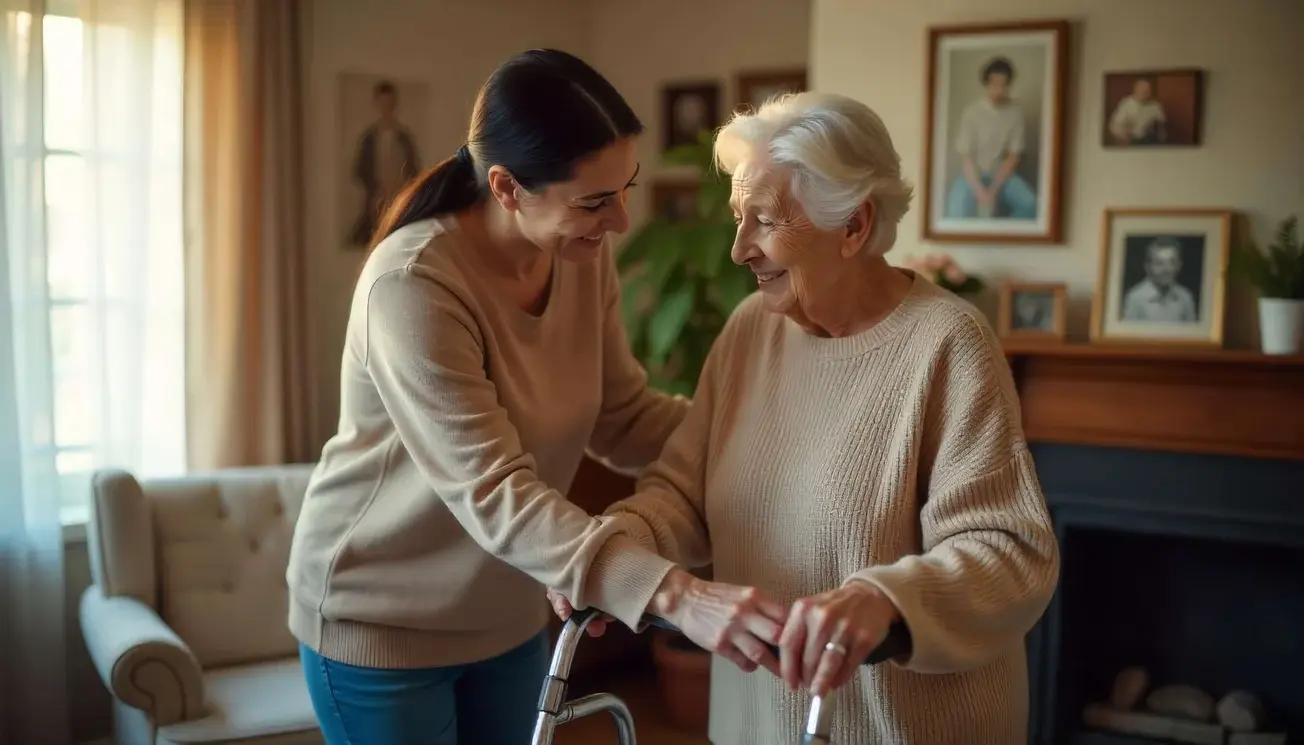
What is Assisted Living? A Simple Guide for Families
What is assisted living, and is it right for you and your family? Learn the basics and more in this article.
Explore Assisted Living
4. Benefits of Senior Living Communities
Senior living communities focus on catering to the residents who live there. Therefore, senior living communities offer plenty of amenities and services that are designed to anticipate the needs of the residents and enhance their lives.
Senior living communities provide a range of amenities, including pet-friendly accommodations, family-friendly design, private dining rooms, personalized activities, and on-site services (for example, fitness classes or salons), The best senior living communities take a holistic approach to aging and support residents in living their best lives. This includes resources and activities to help residents stay mentally and physically healthy while enriching their social and spiritual lives.
At Cedarhurst Senior Living communities, our Living TRUESM commitment involves tailoring daily activities, amenities, and meals to residents by understanding all of their needs and preferences.
Physical Benefits of Senior Living
When done right, senior living makes wellness easier and more fun. At Cedarhurst, we look at the whole picture of physical wellness. For example, we don’t just provide delicious, nutritious food options for residents. We also provide options for physical fitness, including beautiful grounds and trails for walking with friends or pets. Let’s dig into the details.
Healthy, Delicious Food
At Cedarhurst, we offer our Crafted by Cedarhurst® dining program. This program provides robust menus that feature regional dishes, comfort foods, and seasonal favorites while meeting the nutritional needs and preferences of residents.
Eating healthy is good for the body, but good food is more about more than just the right ingredients. It’s also about taking joy in food choices that support residents’ well-being.
We offer meal choices such as:
- Heart-healthy options for residents who want to focus on their cardiac health
- Boost Your BrainSM options that provide nutrition for strengthening and preserving cognitive functions
- Gluten-free options to manage gluten intolerance
- Diabetic-friendly options that feature sugar substitutes
- Low-sodium options that have reduced salt for those who are monitoring salt intake
In addition to these delicious choices, our culinary program menus regularly offer favorite items including all-day breakfast food and fresh daily soup! Daily specials vary depending on the region and reflect local tastes and culture, with freshly sourced ingredients.
Check out some of our top meal options.
Physical Fitness
Physical activity is one of the most important things your parent or family member can do for their health. It delays or even prevents many health problems that happen as we age. It can help improve mental clarity, reduce your parent’s or family member’s risk of falling and bone injuries, and reduce the risk of stroke, heart disease, dementia, depression, and diabetes. However, starting and sticking to a physical fitness routine can be difficult for anyone.
Sticking to a fitness routine can be easier with a gym in the neighborhood or by living in a highly walkable area. Depending on the senior living community you choose, your family member could have those things just outside their front door. Many senior living communities provide amenities such as walking trails or gyms to encourage residents to become healthier. Exceptional communities even offer daily fitness classes that combine fun, socialization, and wellness!
Gyms in senior living communities are stocked with easy-to-use, safe equipment and may be staffed by personal trainers who can answer any questions or even create fitness plans tailored to your parent or family member. It can be much easier for your parent or family member to stick to a gym routine when the fitness center is steps away from their apartment. Additionally, living in a community means your family member will have the support of other wellness-conscious residents.
Living among others who are conscious of their wellness and physical fitness routines can also inspire your parent or family member to get moving. Seniors who have diverse social supports and high levels of socialization are more likely to follow a physical fitness routine and incorporate physical activity into their daily habits. For example, exercise classes with other residents can support socialization and help widen your parent’s or family member’s social circle by encouraging contact with residents with similar interests.
Nature Paths for Walking
At the right senior living community, those who prefer nature will find beautiful grounds with maintained nature paths for walking with friends and family or even a four-legged furry companion.
People assume that senior living communities don’t allow pets, and even just ten years ago, that was true. However, many senior living communities today don’t just tolerate pets—they welcome them. These communities provide dog parks and walking trails so residents and their furry companions can get exercise in. Research shows that dog owners walk approximately 22 minutes longer than those who don’t have a dog.
Maintaining physical fitness isn’t the only benefit of taking a pet out for a stroll. The pets themselves also provide benefits to physical health such as reducing blood pressure and stress-related hormones like cortisol. Research has shown that pets may decrease stress as well as improve heart health.
Mental Benefits of Senior Living
Our social circles naturally tend to get smaller as we age. This begins at retirement when work colleagues no longer provide a point of contact each day. Additional factors that dwindle social circles include friends and family moving away, and friends passing away. Transportation difficulties and an empty social calendar can also contribute to feelings of isolation and loneliness.
Social isolation can lead to health complications such as:
- Depression
- Anxiety
- High blood pressure
- Higher risk of heart disease
- Decreased immune response
- Cognitive decline
- Safety concerns (if your parent or family member is living at home alone)
A potential solution to feelings of loneliness and isolation comes with a robust life in a senior living community. Let’s explore some of the top mental health benefits of living in a senior living community.
Improvement in Quality of Life
In a senior living community, residents have the ability to walk down the hall and talk with a friend, participate in scheduled and spontaneous activities, and share meal times with old and new friends. However, an active social circle isn’t the only thing that contributes to an improved quality of life; it’s also the pets.
At Cedarhurst, we recognize that pets are just as much a part of the family as the people in it. Not only do pets contribute to a more active physical fitness routine, but they also provide companionship and unconditional love.
Positive benefits of having a pet include boosting the owner’s mood, reducing loneliness, and providing social support. For example, pets frequently sense their owner’s emotions and needs and respond by giving them love and attention. Dogs are often used as a form of therapy because they have the ability to interpret body language, tone of voice, and gestures and know when someone is struggling.
Reduced Stress
Feelings of stress are a normal human reaction, and they happen to everyone. The human body is designed to react to stressful situations. However, when stressors continue for an extended period of time without relief or relaxation, they impact our biological processes, which can lead to negative health consequences. Long-term stress can:
- Cause wear and tear on the body such as a weakened immune system, high blood pressure, and depression.
- Worsen existing mental health problems, gastrointestinal problems, and cardiovascular diseases.
Whether your family member’s stressors include taking care of a family home that’s too big, coping with a reduced social circle, or struggling with landscaping or meal preparation, senior living communities address these factors. They take care of housekeeping, meals, and landscaping so your parent or family member can cross all of these tasks off of their to-do list.
Senior living communities also focus on connection and recognize how crucial it is to senior health. Friendships can be more difficult to start and maintain as we age. However, senior living communities regularly offer the opportunity to meet and connect with new friends and neighbors.
Socially active people are better equipped to handle stress, and as a result of being around others, seniors can feel more welcome, comfortable, and relaxed. This reduces the risk of stroke or heart attack while also reducing blood pressure. Additionally, an increased ability to manage stress can boost the immune system.
Cognitive Benefits
According to research, there's a link between loneliness and the development of dementia. Individuals between the ages of 45-64 who are frequently lonely are more likely to develop Alzheimer’s disease or dementia later in life. However, recovering from loneliness during this period of time can make an individual less likely to develop these conditions.
Socialization, therefore, is crucial to cognitive health, and senior living communities such as Cedarhurst make sure there are plenty of opportunities for nurturing existing social connections and making new ones. Whether it’s special events, programs, or even dinner with other residents, there are plenty of opportunities to support socialization and cognitive function. In fact, those who have frequent social contact have a cognitive decline rate of approximately 70 percent less than people who are isolated.
Social Benefits of Senior Living
Connection is important, and senior living communities make connecting with neighbors and friends much easier than living in a house. Residents of senior living communities experience a welcoming atmosphere with plenty of opportunities to make connections and thrive.
Opportunities for New Friends
Your parent or family member may wonder how they’ll make new friends and fit into a senior living community. Senior living communities make starting a new friendship less stressful and more convenient. Shared spaces such as game rooms, hobby rooms, fitness centers, and dining rooms create natural opportunities for connection, so your parent or family member can find a new friend or two at events or just by participating in things they love to do!
Socialization has numerous benefits, such as improved mental health, mood, cognition, memory, and even exercise habits. Senior living communities provide daily opportunities for social connection such as activities, volunteer opportunities, and classes.
Senior living provides a town-like atmosphere with friendly neighbors, routines, and special events. Residents have the opportunity to volunteer at local organizations in the wider community, support local businesses by taking the community bus to their favorite shops and restaurants, and attend other events or farmers markets.
Pet-friendly communities don’t just benefit the residents who have a pet, either. Residents who don’t have a pet often visit the apartments of residents with a dog or cat, and staff members often carry treats for the pet when they’re visiting. Additionally, people who have a pet are approximately 60 percent more likely to get to know others around them.
Spiritual Benefits of Senior Living
Aging gracefully isn’t about avoiding wrinkles; it’s about embracing rather than fearing age and building a life that one chooses, no matter what one wants from the future. At Cedarhurst, we empower residents to live a life of their choosing through our commitment to Living TRUESM.
Our TRUE acronym keeps us anchored to our core values:
- Tailored to You: We don’t believe in communities with a one-size-fits-all approach, and we don’t believe that lives are one-size-fits-all, either. We listen to all residents and help them shape the life that they want and deserve.
- Relationships of Integrity and Trust: Relationships are what make life worth living. We strive to build an environment of joy where residents can continuously make new friends. Our staff also values every resident as an individual and partners with them to ensure they make the most of this new step in their life.
- Uplifted to Live Your Best Life: We ensure residents have what they need to live life on their own terms and help them live as independently and happily as possible.
- Excitement of the Senses: The five senses are a connection to the world around us. We stimulate residents’ senses with beautiful grounds, delicious foods, and opportunities for joy.
When residents move into one of Cedarhurst’s communities, we ask them to complete a survey that tells us all about them. We want to know residents well and know how to tailor their experience just as they like it. After this, four times a year we solicit suggestions for enrichment activities and programs your parent or family member would like. Living TRUESM is all about residents, which is why we ask.
Our core belief is that every person should feel loved, valued, supported, and able to safely live life to the fullest. This is the foundation of every Cedarhurst community, and no matter whether your parent or family member is a resident in independent living or receiving a level of care in assisted living or memory care, we strive to ensure that they’re satisfied, happy, and safe.
Explore Related Resources
.png)
Living TRUESM
Discover Cedarhurst’s personalized approach to senior living and how we ensure our programs supports every resident.
Learn How We Live True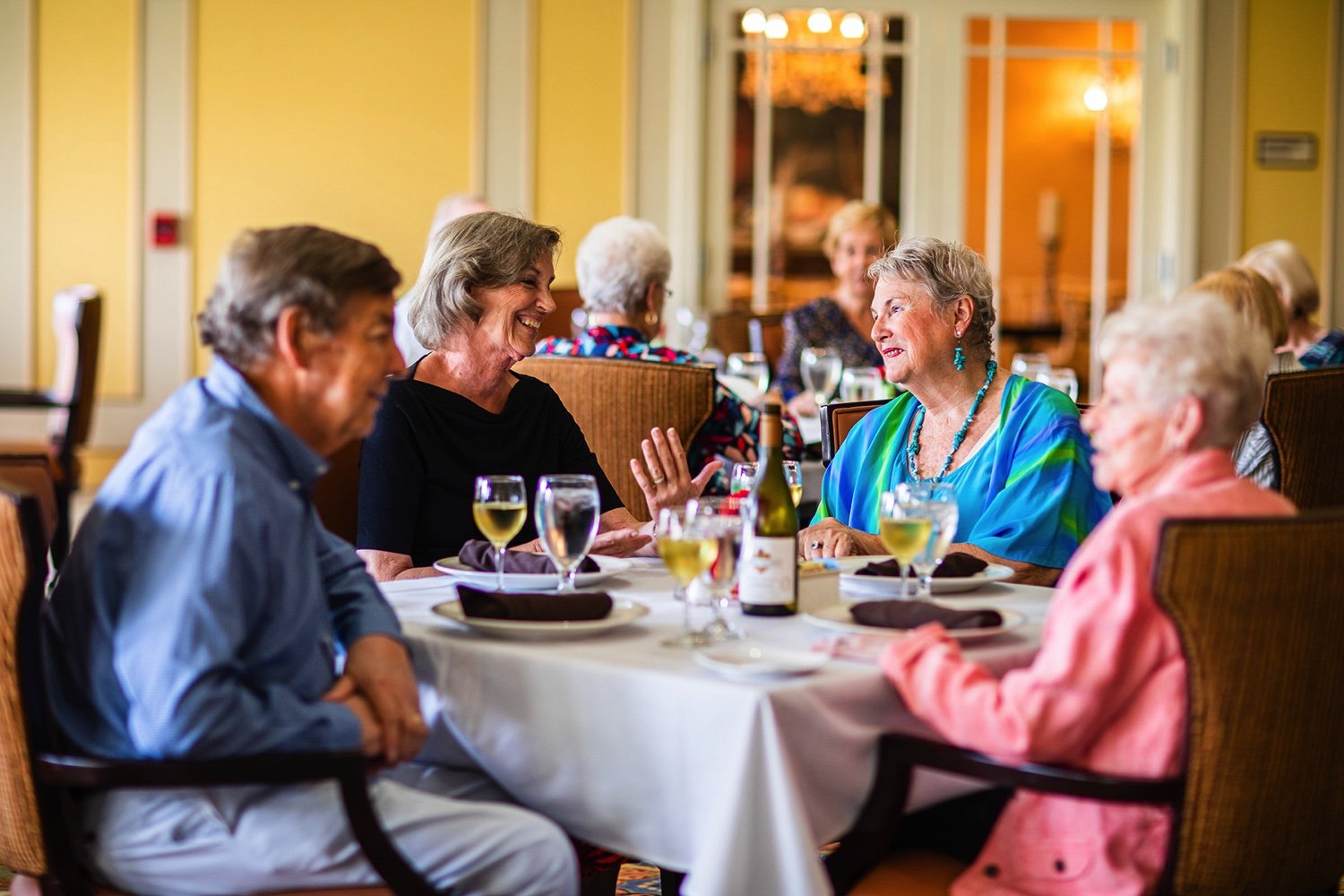
Crafted by Cedarhurst®
Enjoy homestyle meals that suit your tastes and dietary needs, served when and how you like.
Check Out the Menu.png)
Top 17 Delicious Meals at Cedarhurst Senior Living
At Cedarhurst, we know food is about more than a single meal. Check out some of our top senior living dining menu options.
Sample the Food Options
5. When Is It Time for Senior Living?
One of the most emotionally taxing decisions is knowing when is the right time for senior living for your parent or family member. You may be concerned about whether your parent is doing okay at home and if they’re thriving, safe, and healthy when you’re not around. Many adult children face these common worries, but they struggle with when and how to ask questions.
A few signs that it may be time to start looking for senior living solutions for your parent or family member include when they are:
- Experiencing some falls at home or while out and about
- Dealing with a complex medication regimen or making medication mistakes
- Not eating well or having inconsistent meals
- Struggling with feelings of isolation or loneliness.
- Living with chronic pain
- Facing a diagnosis of Alzheimer’s disease or dementia
- Struggling with daily personal care tasks or with personal hygiene
Senior living communities have skilled staff members on hand to help your family member with any and every task. Whether it’s handling medication management, ensuring they’re eating consistent and healthy meals, or providing extra emergency support to help your parent or family member in the event of a fall, a senior living community provides the support they need so they can thrive, safely and happily.
Explore Related Resources
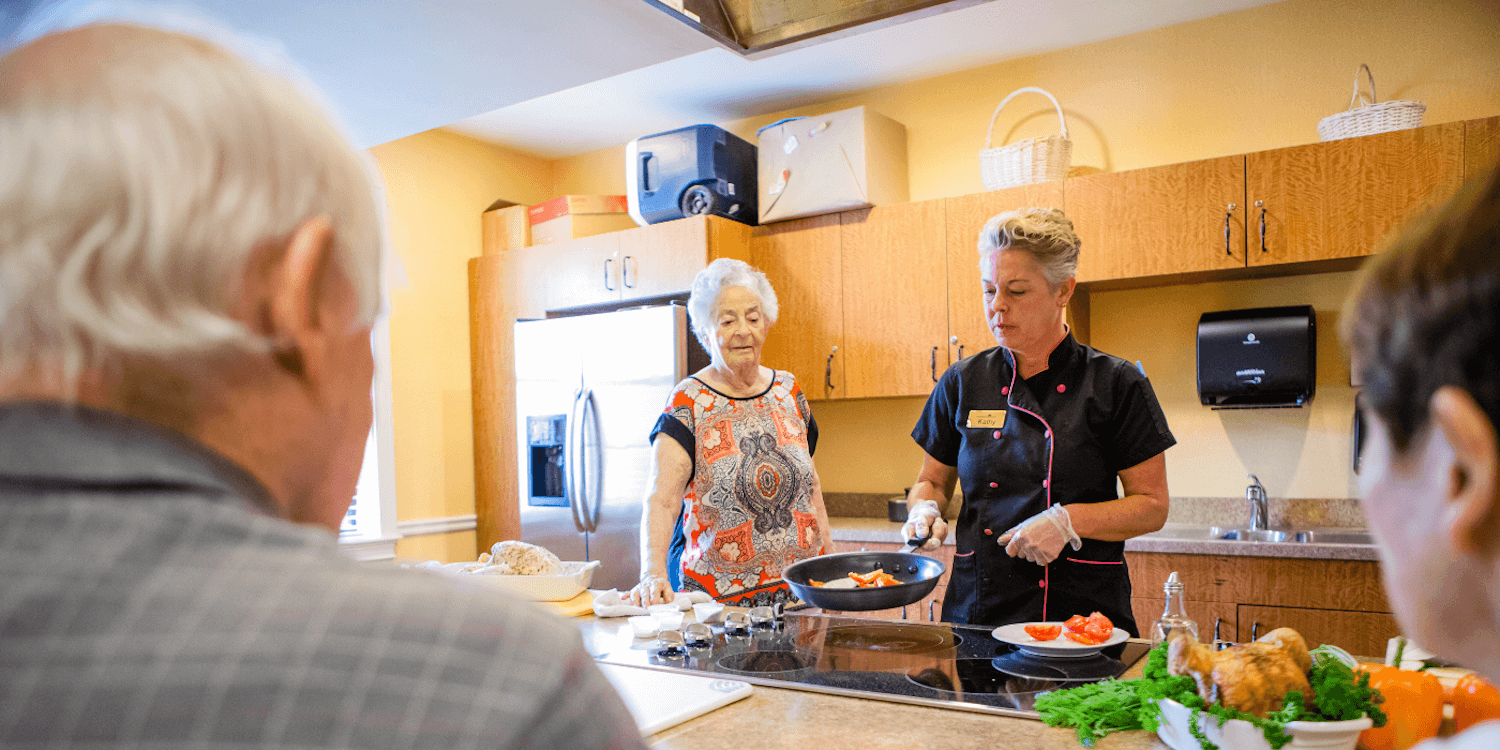
Recognizing When Your Parent Needs Company: Action Steps
Senior living offers real solutions to common challenges that can occur for older adults living at home alone or with a partner.
Discover the Signs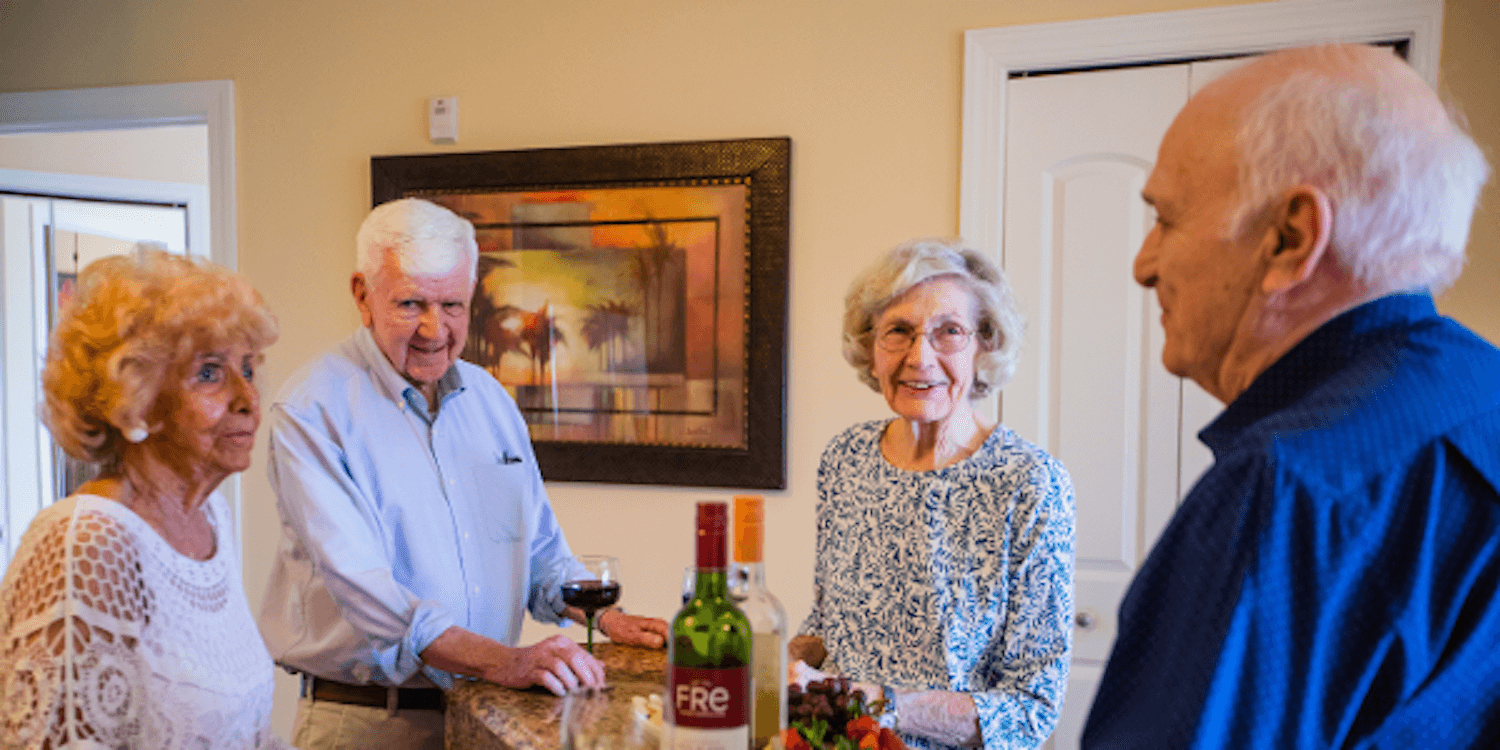
Planning Ahead: When to Start Looking into a Senior Living Community
When should you start looking into senior living communities? Here are five signs that it's time.
Make a Plan
6. How Do I Choose the Right Senior Living Community?
Choosing the right senior living community isn’t easy. You’ll want to do plenty of research to make sure it’s the best community for your parent or family member and that it has all of the amenities your parent or family member is looking for.
To find the best community for your parent or family member, evaluate the following points:
- The best location: Does your parent want to be closer to other family members or in a new community?
- What type of care is required: Evaluate whether your parent or family member doesn’t need active levels of assistance (independent living) or if they need support for some daily activities while also having access to enriching activities (assisted living). If your family member has received a diagnosis of Alzheimer’s disease or other type of dementia, a memory care community can provide the ideal level of care they require.
- Financial considerations: Amenities and services vary by senior living community, and they may also carry additional associated costs. Consider different options when you’re looking for a senior living community for your family member, and balance desired amenities against your family’s financial considerations.
Is senior living right for you?
Answer a few simple questions and receive personalized guidance in just a couple of minutes.
Find a Community
Explore locations to view pricing, floor plans, and care options near you.